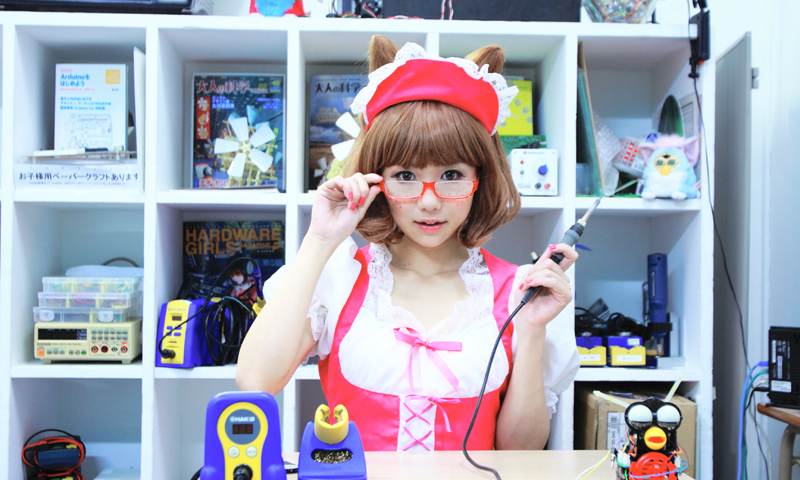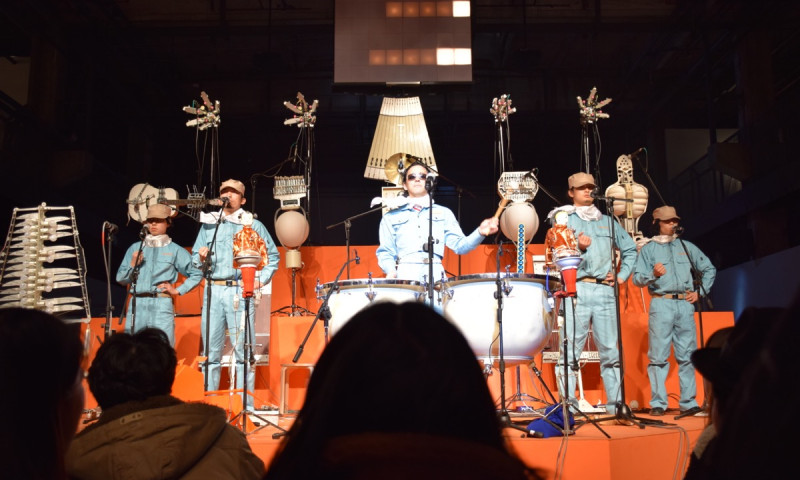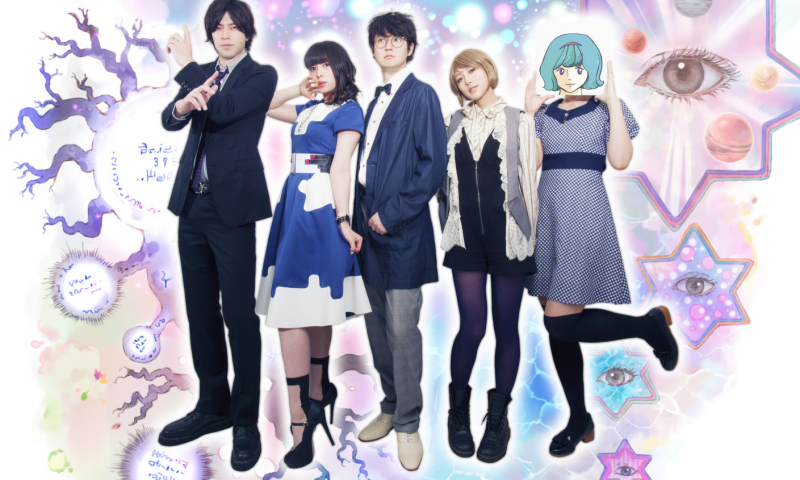
TOKYO CUTTING EDGE CREATORS by Julie Watai #11 featuring Frenesi: The Singer-Songwriting-Animator
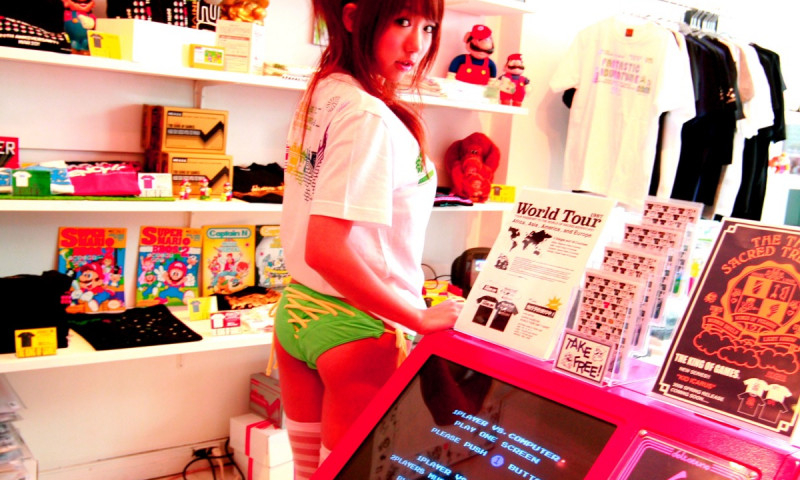

Sponsored Links
After working at an idol in Japan, Julie Watai moved by herself to Italy, publishing SAMURAI GIRL in 2006 while working as a photographer for Italian publishing company DRAGO&ARTS. She quickly became an international Japanese pop culture figure, gaining a large following. After returning to Japan, she continued her work as a photographer, along with developing electronics as a hobby and iPhone apps, and has been remarkably successful as part of the Akiba-style geek culture, too.
日本でアイドルとして活動した後、24歳で単身イタリアに渡り、イタリアの出版社「DRAGO&ARTS」からフォトグラファーとして「SAMURAI GIRL」を2006年に出版。日本のポップカルチャーの姿をいち早く世界に発信し、注目を浴びたJulie Watai。帰国後も、フォトグラファーとして作品作りを続ける傍ら、電子工作やiPhoneアプリの開発に携わるなど、アキバ的なギーク文化での活躍も目覚ましい。
Not long ago we sat down with Julie Watai about the development of her mobile ring light, Sel*Kira.
最近では、セルフィー用のモバイルリングライト「セル*キラ」の開発に携わり、TGUでもインタビューをさせて頂いた。

Sel*Kira / セル*キラ
Interview page : http://tokyogirlsupdate.com/featured/sel-kira-julie-watai.html
Then on February 5, 2016, Julie Watai released a photo collection completely shot, styled, and directed herself, with her as the sole subject, called “Tokyo Future Classic” (DU BOOKS). The book includes re-makes of her past work, as well as other works previously unreleased. Additionally a short sci-fi story related to physics and space science by the renowned researcher Marco Casolino was published with her Android ASUNA and yuri (girls love)-themed work, LOVE VALLEY.
そして2016年2月5日、Julie Wataiがリリースしたのが、撮影、被写体、スタイリング、ディレクション、すべてを自分でこなした作品を集めた写真集『トーキョー・フューチャー・クラシック』(DU BOOKS)。過去の作品をリメイクしたものや未発表の撮り下ろし作品も含まれている。また、アンドロイドASUNAと百合をテーマにした作品『LOVE VALLEY』では、物理学や宇宙科学などの分野で著名な研究者マルコ・カソリーノによるSFショートストーリーが掲載されている。

“Tokyo Future Classic” (DU BOOKS) ¥2,160 (tax included)
And now, Tokyo Girls’ Update will start publishing a Julie Watai’s column, TOKYO CUTTING-EDGE CREATORS by Julie Watai (working title), which covers Tokyo’s latest cutting-edge culture, once a month on our site! (We plan to publish the first installment mid-March.) To kick off the start of the series, we took the opportunity to interview her about how she captures Tokyo culture, as described by the title of her new book, “Tokyo Future Classic”.
そんな東京の最先端カルチャーを常に追いかけ続けてきたJulie Wataiさんの連載『TOKYO CUTTING-EDGE CREATORS by Julie Watai』(仮)が、Tokyo Girls’ Updateにて月1回のペースでスタート!(第1回目は3月中旬公開予定) 連載開始にあたり、新著『トーキョー・フューチャー・クラシック』の解説を通じ、改めてJulie Wataiさんが、東京のカルチャーをどう捉えているのかを伺った。
– You began the prologue to Tokyo Future Classic in the style of a letter, but could you tell us about the message behind it?
『トーキョー・フューチャー・クラシック』のプロローグが手紙の様なスタイルで始まっていますが、これにはどういうメッセージがあるのでしょうか?
I worded the prologue the way I did with the intention of it being a message from my future self, kind of like a letter. As if were a message sent from the person I’ll become in the future. Though the title of my work is Tokyo Future Classic, it also includes a sci-fi short story about Android ASUNA inside. It’s written in English, but there’s a Japanese translation on the last index page.
プロローグに書いている文面は私が書いたんですけど、未来の私からのメッセージ、手紙のようなつもりで書きました。いつかの未来の私からのメッセージ、という。本のタイトルが『トーキョー・フューチャー・クラシック』なんですが、中にアンドロイドASUNAのSFのショートストーリーも入っているんですよ。英語で書かれているんですが、和訳したものが最後のインデックスページにも載っています。
– What kind of people do you want to read your photo book?
どういう人にこの写真集を見てもらいたいと思っていますか?
This book is completely made up of selfies, which is what makes it decisively different from my previous works. Right now selfies are completely normal, right? But they’re usually taken on with a phone. However, in Tokyo Future Classic, all of them have actually been taken with a single lens reflex camera. First you have to set-up the camera on a tripod. I use an infrared remote control to trigger the shutter. So if you look really closely at each picture, you can find a remote control somewhere. (laugh) It really is the ultimate selfie photo book, and people would say things like, “You really took things that far?!” (laugh) With selfies taken on your phone, you can easily edit them with apps, right? But in this book all the single-lens photos were edited in Photoshop… Considering just how much technology it takes to do it like that, in that way I consider it the ultimate selfie. I hope people who like taking selfies with their phone read this book and amuse themselves by thinking, “Oh, so you can also do it this way, too.”
今までの作品と決定的に違う部分は、この本は全部「セルフィー」っていうところなんです。今、自撮りって一般的なものじゃないですか。でもそれは携帯での自撮り。でも『トーキョー・フューチャー・クラシック』は、全部一眼レフで撮影しているガチの自撮りなんです。三脚でまずカメラをセットして。シャッターは、赤外線でリモコンを使って切っているんですよ。なので写真をよく見ると、リモコンがどこかにあります(笑)。本当に、究極のセルフィー写真集ですよね、「ここまでやる?!」っていう(笑)。携帯で撮るセルフィーってアプリとか簡単にかわいく加工できちゃうじゃないですか。それをこの1冊は、一眼で撮ってPhotoshopで加工して……ものすごい技術を注ぎ込んでいる、という意味で究極のセルフィーだと思うんです。携帯の自撮りが好きな人も、これを読んで頂いたら「ああ、こういうやり方もあるのね」って面白がってもらえるんじゃないかな、と思っています。
– So rather than just people into mechamania and geek culture, you’d like a broader audience to see your work.
メカマニアやギークカルチャーが好きな人、というよりも、割と幅広い層の方に見て欲しい、という。
That’s right, I’d like more women to take a look at it. HARDWARE GIRLS (Konohana Books), which I released in 2010, had gadget and geeky elements, as well as gravure shots, and was aimed at a male audience. It was around the time Chinkame* and smart girls* were popular. I put out a new version of that. (*Well-known, stylish nude photo books released around 2010)
そうですね、もっと女性に見てもらいたいと思っています。2010年に出した『はーどうぇあ・がーるず』(コノハナブックス)は、男性向けで、ギークでガジェット要素があって、そしてグラビア写真だったんです。ちょうど*「ちんかめ」とか*「smart girls」とかが流行った頃だったんで。ああいうものの新しいバージョンとして出したんです。(※注:2010年頃流行った、おしゃれヌード写真集)
But this work is really all selfies. There’s a variety of themes like robots and androids, completely counter to Harajuku street-style ones, and I think you can really get a feel for Japan by putting them all together. There’s tons of different this-and-that styles going on lately, you know? (laugh) And I think all of that Tokyo culture has been condensed down into this one book.
でも今回は本当に全部自撮りで。ロボットとかアンドロイドもありつつ、全く真逆の原宿ストリート的なものがあったり、それぞれの作品のテーマはバラバラなんですけど、そういうのを全部ひっくるめて今の日本の姿だと思うんです。○○系とか、最近色々てんこもりじゃないですか(笑)。まさに今の東京カルチャーが凝縮されていると思います、この1冊に。
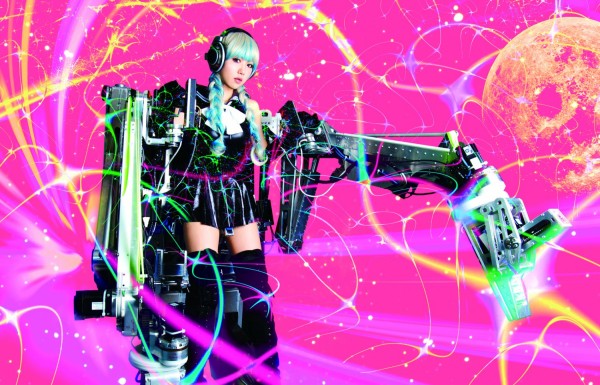
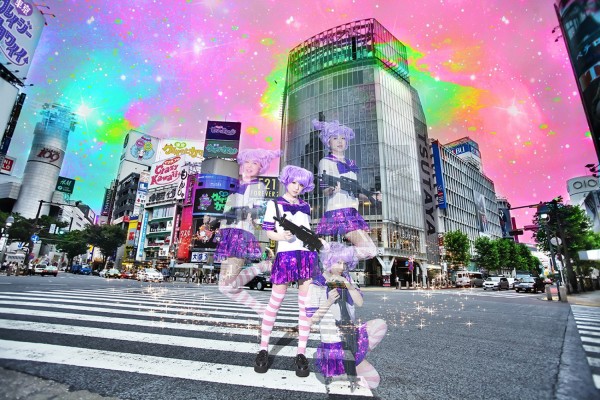
– On the index page it lists each photo’s theme and what creators were involved, and I found this page to be really interesting as well.
インデックスページでは、その写真が何をテーマにしていて、どういうクリエイターさんが加わっているのか、詳しく書かれていますが、このページもすごく面白いですよね。
I appreciate the compliment. There’s two parts to enjoy with it by looking at the photograph, and then flipping over to the index page and finding out how it was made.
ありがとうございます。写真を見て、その後に、インデックスページを見て「これはこういう風に作られたんだ」って楽しむ、2段階の楽しみ方があると思います。
And there’s a short sci-fi story included, too. LOVE VALLEY is a work I shot based on android and yuri (love between two girls) themes. It’s also up on my website, but since it made a considerable impact, we put it in with the short story released in this book as a special edition.
あとSFのショートスーリーもついているので。「LOVE VALLEY」はアンドロイドと百合(注:女の子同士の恋愛)をテーマにして撮ったんですよ。自分のウェブサイトにも掲載していたのですが、かなり反響があったので、スペシャル版として、ショートスーリーとともに今回本にまとめました。
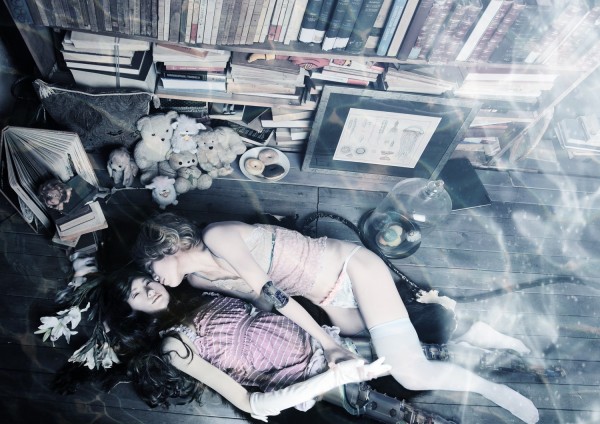
LOVE VALLEY
There’s a professor named Casolino, who studies space development and physics, and he’s also a sci-fi writer. So I asked Casolino to write a short story for me. He let me translate it into Japanese.
カソリーノさんという宇宙開発や物理学の研究をしている先生がいるんでが、その方はSF作家の方でもあるんですよ。なのでカソリーノさんにストーリーを書いてもらって。日本語への意訳は私もやらせて頂きました。
– Since it’s written in English, even people abroad can enjoy it, too!
英語で書かれているので、海外の方でも楽しめますね!
They can, and even the prologue has an English translation. The book is mostly photographs, so I wanted foreigners to check it out as well.
そうですね、プロローグから英語の翻訳もついているので。基本的に写真がメインなので、ぜひ海外の方にも見て欲しいと思っています。
Being so exaggerated, I think it’s easy to get a strong sense of its Japanese-ness. Unlike in the past, like with people who really like anime for example, they’re able to see it with almost the same timing as it being broadcast in Japan. So people who have a strong interest in Japan are already getting Japanese information in real time. In fact there are many people who have been to Japan multiple times. That’s why I was surprised I hadn’t seen very many condensed versions for “getting a feel of Japan”. There’s no doubt that people like anime, samurai, geisha, cup noodles (instant ramen), and Harajuku, too. Japanese culture is very subdivided. There’s a ton of it, all separated. But when you put it all together, I think you get how people see Japan from overseas. So there are elements of different genres in this book, but I think all of these genres are part of current Tokyo culture, so tried to realize that idea by putting them all together into one book.
こういう誇張された、わかりやすい日本っぽさ、っていうのは強く意識しています。昔と違って、例えばアニメが本当に好きな人だと、日本で放送されるのとほぼ同じタイミングでもう観ているじゃないですか。だから日本に強く興味がある人は既に日本の情報をリアルタイムで手に入れていて。日本に実際に何度も来てる方も多いですし。だからこそ、“日本感”が凝縮されたものって、意外とあんまりないよな、っていう気がしていて。みんなきっとアニメも好きだし、サムライも芸者も好きだし、カップヌードルも好きだし、原宿も好きだし。日本のカルチャーってすごく細分化されているんですよね。全部バラバラで、てんこもり。でも、それを全部合わせて、海外から見た日本なのかな、って思うんです。だからこの本もいろんなジャンルの要素があるんですけど、これぞまさに今の東京カルチャーだなと思って、それを意識して1冊にまとめました。
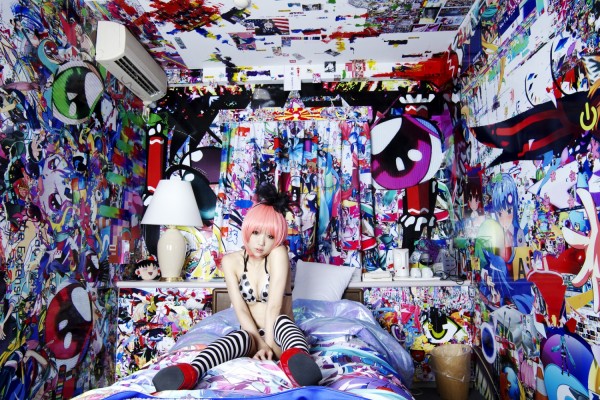
Cool Japan, kawaii, geek, moe… Like Julie Watai said, Japanese culture is subdivided. For example, when you go to Akihabara where all these different cultures are mixed together, I think it it’s impossible for anyone to show all of the culture there, or explain them well. But that’s okay. Because this mix of culture is exactly what Japanese culture is. And keeping that in mind, we hope you all take the time to check out Tokyo Future Classic.
クールジャパン、カワイイ、ギーク、萌え……Julie Wataiが言う様に、日本のカルチャーは細分化されている。例えば、なかでもそんなカルチャーが雑多に混在している秋葉原に行くと、この街の文化をどう表したらいいのか、誰も上手く説明する事ができないのではないだろうか。でも、それでいい。それが現在の日本のカルチャーなのだから。そんな想いの詰まった『トーキョー・フューチャー・クラシック』を、ぜひ皆さんにもご覧頂きたいと思う。
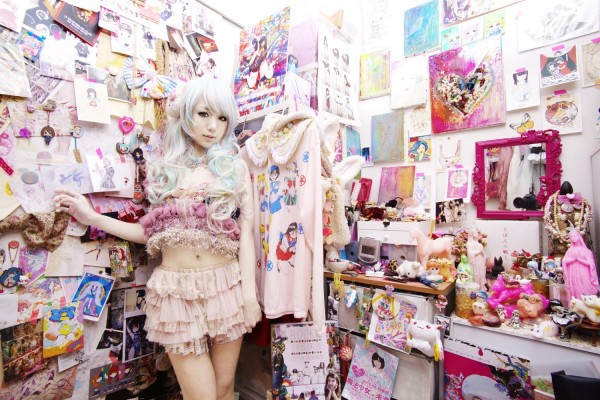
Next time, with the beginning of Julie Watai’s series, where she’ll be interviewing creators that have caught her interest, we want to discover the latest cutting-edge culture in Tokyo. Please look forward to it!
次回からの連載では、Julie Wataiが注目するクリエイターとの対談を通じ、新たな東京の最先端カルチャーを発見して行きたい。どうぞお楽しみに!
Related links
Julie Watai official site : http://juliewatai.jp/
Julie Watai Twitter : https://twitter.com/JulieWatai
Julie Watai Facebook : https://www.facebook.com/juliewatai
Buy Item
Translated by Jamie Koide
Sponsored Links
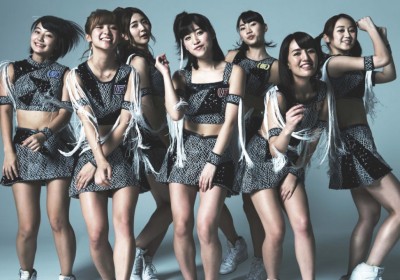
UPUPGIRLS (KARI) Release Details of Long-Awaited 20th Single “Party People Alien / Seven☆Peace”!

8th Wave of Tokyo Idol Festival 2016 Performers Announced!!


